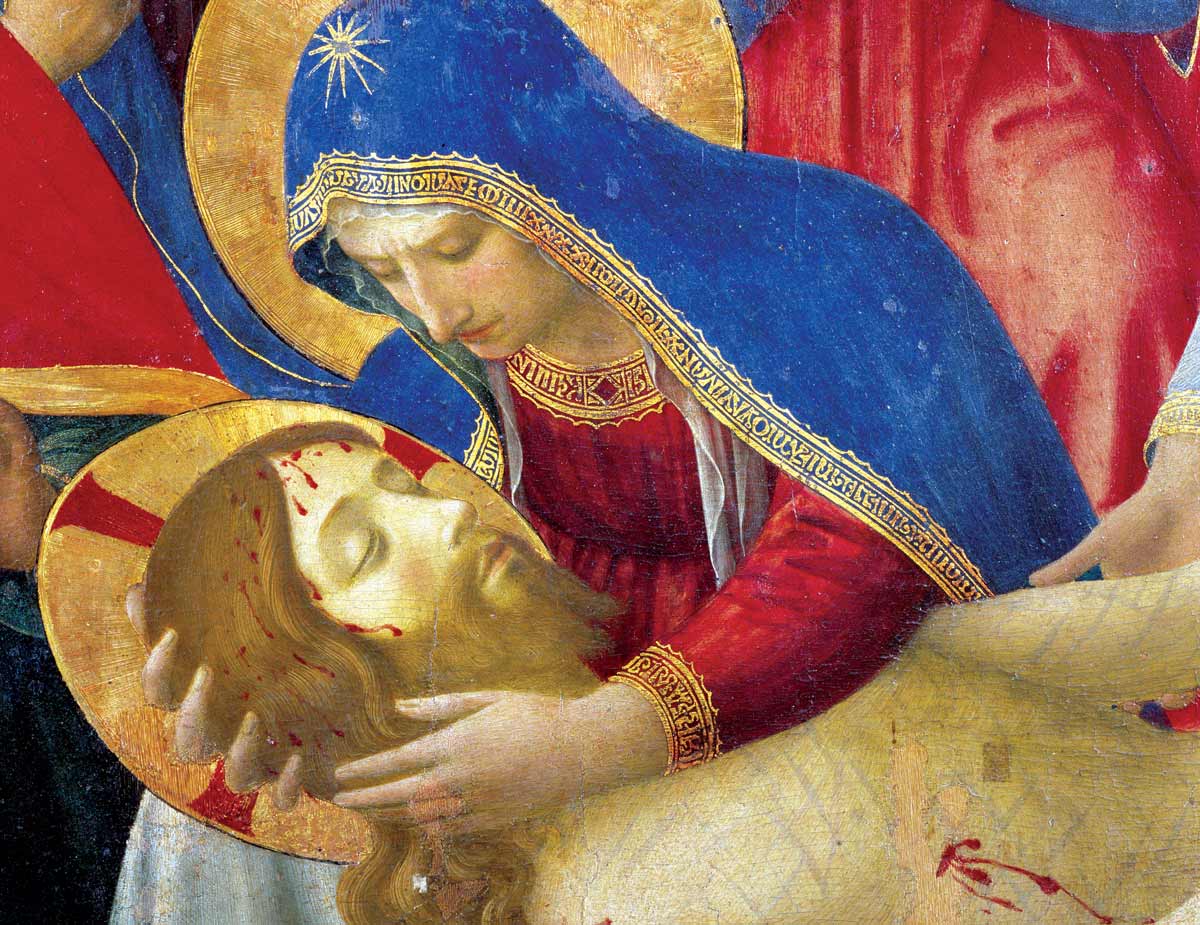cultură şi spiritualitate
It is a pity when specialist historians condescend to an enthusiastic public.
 Fra Angelico’s Deposition from the Cross (detail), 1436 © Bridgeman Images.
Fra Angelico’s Deposition from the Cross (detail), 1436 © Bridgeman Images.
One day in 1420, the East Anglian mystic Margery Kempe visited a church in Norwich. In her extraordinary Book, a frank, personal and deeply engaging narrative of her life that has a claim to be the first autobiography in the English language, Kempe tells of many such visits, not just in England but also on her travels abroad. It is one of her gifts that she can conjure up for her reader with great vividness her interactions with other people, whether hostile or supportive, and so she does for this particular day in Norwich.
In this church, she records that she saw a work of devotional art: an image of the Virgin Mary with her son, the dead Christ, on her lap. It was an image of the kind we would call a ‘Pietà’, but medieval English Catholics knew it as a ‘Pity’. The reason the image has that name is because it was intended to evoke a strong outpouring of compassion in the heart of the viewer, a powerful feeling of love, grief, pity and piety. And so it did for Margery Kempe, who records that she had an intense emotional response to the image, weeping and crying loudly.
But her reaction apparently surprised and irritated the priest who was looking after the church. Coolly dismissive, he reminded the emotional woman that it was all a very long time ago: ‘Damsel, Jesu is dead long since.’ In other words, it was a historical event, centuries past; why should she be upset about it? Margery Kempe, never daunted, boldly informed him he was wrong: though Jesus’ death happened long ago, to her it was as ‘fresh’ as if it had occurred that same day ‘and so me thinketh it ought to be to you and to all Christian people’.
In this case (as in most such encounters in her Book) we are clearly meant to think Kempe was in the right: she was reacting to the image exactly as its name suggested one ought to react. The priest’s is a strange response – the last thing you might expect a cleric to say in this situation. One might think he would be pleased to see such strong religious devotion in his visitor. Would he have preferred for her not to care at all? Would indifference be better than what he sees as an excessive emotional response? His comment feels like the reaction of a professional to an amateur, annoyed and uncomfortable to see an overly invested stranger encroaching on their turf.
Odd as his response seems, something about it rings very true to life. Specialists do tend to get embarrassed when they see people reacting to their subject in what they perceive to be the wrong way, particularly if their reaction seems too emotional, personal or irrational, rather than calmly analytic. I often think of Margery Kempe’s little story when I see the way some professional historians deal with amateurs who have expressed enthusiasm about their area of history. Their reaction is sometimes very similar to that of Kempe’s sneering priest: it all happened ‘long since’, so why do you care so much?
Satisfying as such dismissiveness might be to the expert, it always seems to me both unkind and counterproductive. History is never just history, even if it is not so intensely ‘fresh’ as Kempe’s religious devotion; it forms part of the stories people tell about themselves, their communities and their own identity. Specialists who have chosen to make history their life’s work care about it deeply, too, so we should be cautious about telling other people that our investment in the subject is the ‘right’ kind of passion, while theirs is somehow illegitimate.
Demanding that people cease to have an emotional and imaginative connection to historical events is simply unrealistic. Of course, experts can and should challenge stories that are based on incomplete or incorrect information, but nitpicking and sniping from the sidelines is never going to compete with powerful emotion. Unless your goal is to stop people caring about history at all – which seems a self-defeating object – you have to offer something as an alternative.
Instead of informing people that they care about history too much or in the wrong way, historians might try a more positive approach. Tell better stories; paint a more colourful picture. If a beloved story is inaccurate, offer a version closer to the truth, which can still speak to the imagination and the heart – and then you might win their enthusiasm to your side and be glad that they care so much.
Eleanor Parker is Lecturer in Medieval English Literature at Brasenose College, Oxford and writes a blog at aclerkofoxford.blogspot.co.uk.
Adaugă un comentariu
© 2024 Created by altmarius.
Oferit de
![]()
Embleme | Raportare eroare | Termeni de utilizare a serviciilor













Pentru a putea adăuga comentarii trebuie să fii membru al altmarius !
Alătură-te reţelei altmarius